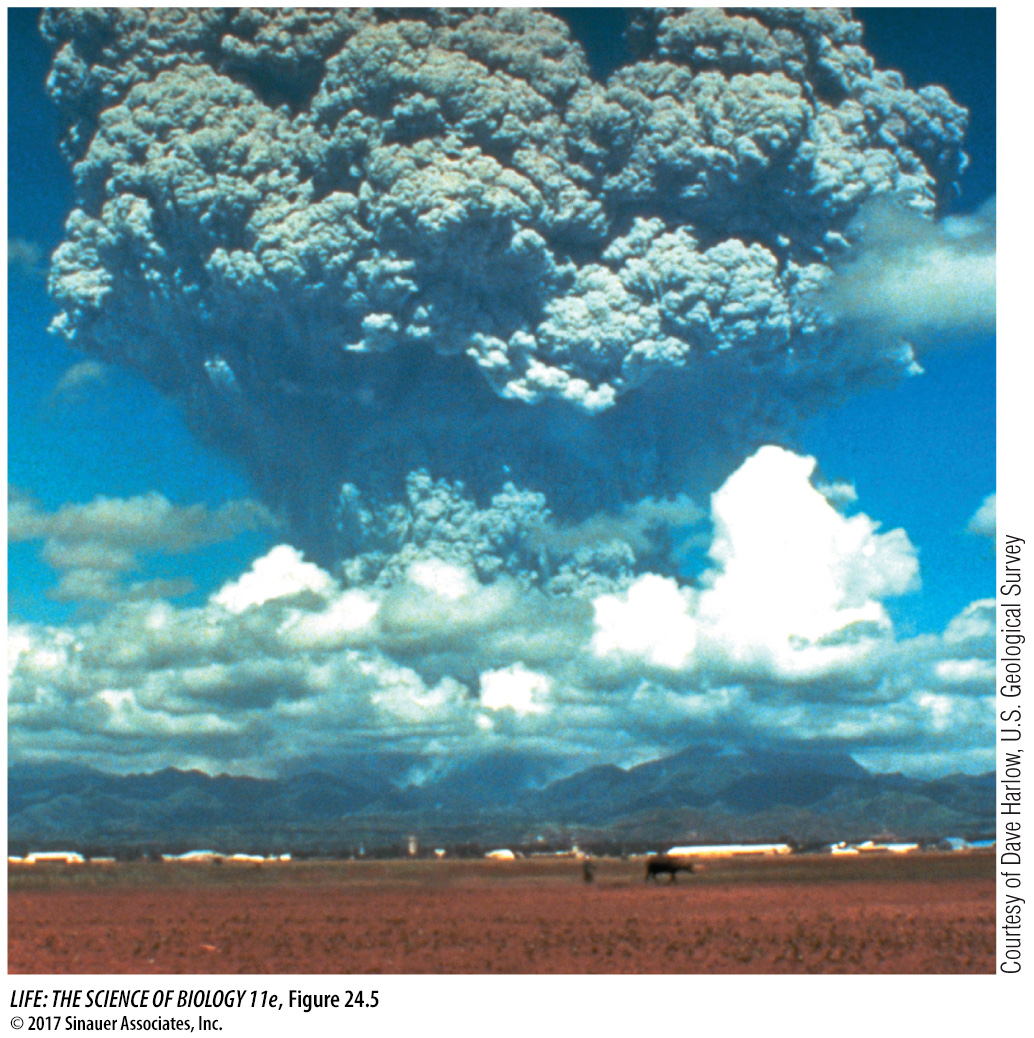Volcanoes have occasionally changed the history of life
Most volcanic eruptions produce only local or short-lived effects, but a few large volcanic eruptions have had major consequences for life. When Krakatau (a volcanic island in the Sunda Strait off Indonesia) erupted in 1883, it ejected more than 25 cubic kilometers of ash and rock as well as large quantities of sulfur dioxide gas (SO2). The SO2 was ejected into the stratosphere and carried by high-altitude winds around the planet. Its presence led to high concentrations of sulfurous acid (H2SO3) in high-altitude clouds, creating a “parasol effect” that reduced the amount of sunlight reaching Earth’s surface. Global temperatures dropped by 1.2°C in the year following the eruption, and global weather patterns showed strong effects for another 5 years. More recently, the eruption of Mount Pinatubo in the Philippines in 1991 (Figure 24.5) temporarily reduced global temperatures by about 0.5°C.

Figure 24.5 Volcanic Eruptions Can Cool Global Temperatures When Mount Pinatubo erupted in 1991, it increased the concentrations of sulfurous acid in high-altitude clouds, which temporarily lowered global temperatures by about 0.5°C.
Although these individual volcanoes had only relatively short-term effects on global temperatures, they suggest that the simultaneous eruption of many volcanoes could have a much stronger effect on Earth’s climate. What would cause many volcanoes to erupt at the same time? The collision of continents during the Permian period, about 275 million years ago (mya), formed a single, gigantic land mass and caused a multitude of massive volcanic eruptions as the continental plates overrode one another (see Figure 24.3). Emissions from these eruptions blocked considerable sunlight, contributing to the advance of glaciers and a consequent drop in sea level (see Figure 24.4). Thus volcanic eruptions were probably responsible, at least in part, for the greatest mass extinction in Earth’s history.

